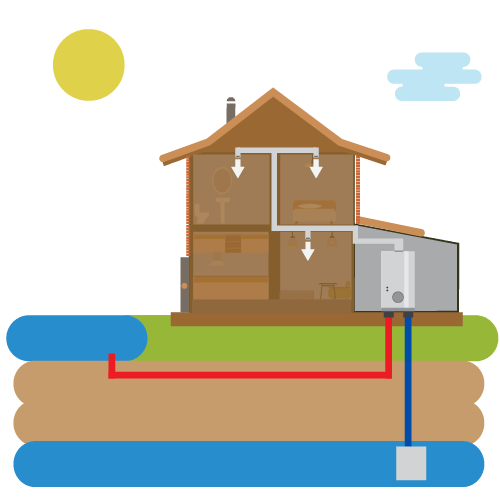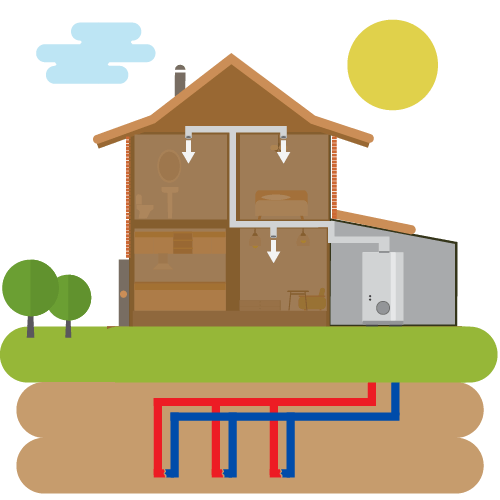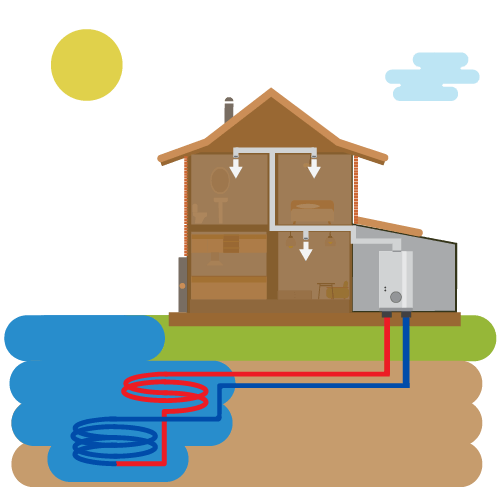Examples of Geothermal Heat Pumps May Include:
Closed Horizontal Loop System
These systems have sealed pipes that contain a working fluid that is warmed or cooled by the ground or water and sent through a heat pump in the structure that it serves. The fluid travels back to begin the process over again.
Open Loop Well Water Systems
Open loop geothermal systems exchange heat by pumping groundwater through the system directly and without recycling it.
Vertical Loop System
In locations with less available horizontal space, the pipes can be buried in deep vertical shafts.
Lake or Pond Loop System
In areas with appropriately sized bodies of water, pipes may be sunk beneath the surface to achieve the same exchange of heat as if they were underground.
The Stats on Geothermal Energy:
The number of heat pumps installed in the United States each year
Approximate number. Source: US DOE.
Geothermal Resources:
Geothermal in North Carolina
November 2019 | Peter Ledford
A deep dive into the two main types of geothermal, it's efficiency, and how it is installed. This presentation also covers the geothermal landscape in North Carolina. Geothermal includes both Geothermal Energy and Ground Source Heat Pump (GSHP) technologies.







